“Because it’s 2018” could be the answer to the question why we do and at the same time do not need special labels such as queer, female, Roma and other kinds of art based on a minority identity (minority in the sense of power, not numbers). On the one hand, we do need these categories, as minorities still do not have equal access to opportunities in the patriarchal system of art institutions; on the other hand though, these could artificially legitimize art that might not even pass inclusive quality criteria. The aim of these criteria should be neither to include minority artists in an existing canon of past and present art, nor to create a parallel narrative. Rather than a label or a retrospective definition of groups or artworks, they represent a common strategy aiming for a subversion of categories such as gender, sexuality, race, nation and power in the art world. What does queer strategy mean in the Czech context, while we, like other post-Soviet states, are coping with the acceptance and realization of identitarian politics and at the same time with its deconstruction?
Why show it at all?
On the occasion of his exhibition Prague Pride: East Side Story, which accompanied the Prague Pride 2014 festival at Karlin Studios, curator Michal Novotný writes in his curatorial text: “For sure, there is no such thing as LGBT, homosexual, gay or lesbian art. As much as there is no such thing as Czech art. At least until we create a certain definition to apply on the original diversity.” The issue with definitions and “labels” was convincingly pointed out by Zuzana Štefková in the book Homosexuality in the History of Czech Culture. Most artists reject the definition of their work as “art with an attribute” as limiting. Štefková explains that the very categories of “homosexual,” “gay,” “lesbian” and “LGBT+” are problematic in the society-wide discourse and that the artists “oppose the instrumental use of such a categorical definition.”[1] Moreover, there is a contradiction between the discourse of the politics of sexuality (and its language as a field of power) and visual art which can address the questions of non-heterosexual desire without words, labels or verbal “confessions;” which is one of the key qualities of queer strategy in the past and present of visual arts. Defying any linguistic apparatus is inherent for queer visual art. What definitions are there then? Art historian James Saslow, the author of one of the earliest systematic interpretations of queer art history, suggests an almost hilariously vague definition. In his opinion, attributing non-heterosexual identity to visual arts can be compared to the starry sky where things keep changing and moving all the time.[2] Martin Putna was more particular, speaking (in the context of literature) about texts by homosexuals about homosexuals for homosexuals; however, by doing so, he excludes a whole range of creative outputs without a clear definition or specific audiences and reception aesthetics in visual arts which are important for non-heterosexuals as well, as they provide an imprint of one’s own experience within an image in an extended field. Ultimately, Saslow’s “definition” seems most agreeable, as queer art is a fluid category (if only for the fact that the two terms it is comprised of are fluid themselves) and defies verbal definition on principle. As shown by Karla Huebner and subsequently Milena Bartlová on the example of painter Toyen, it is the very queer strategy, based on showing the non-terminological, that is the most apt interpretation key to the life and work of the non-conformist artist.[3] This approach is much more convincing than the earlier interpretation of her gender-inverted stylization and her play at “it.”
The process of showing the non-heterosexual experience and making it visible, often manifesting itself in the form of subversion of traditional gender roles and the stereotype of “naturalness,” has always been and still is crucial in the past and present of negotiating queer identities. Creating specific visual codes, such as various sophisticated iconographic references to the homosocial practice of classic antiquity employed since the 19th century, as well as the shared symbols of the emancipation struggle, their reproduction, or the appropriation of various themes from “mainstream” visual cultures, such as the motive of a young man sitting at the seashore from around 1900,[4] have been and still are strategies of social change. Without having to take a stand on the contemporary selection of artworks in global art museums according to the extent of objectification, the answer to the question which keeps reappearing on various discussion forums, i.e. “why do they have to show it all the time, why not keep it private,” would be: because the overwhelming majority of space and time is heteronormative; even at galleries, art museums, art schools and other art institutions. Moreover, queer strategy in visual arts has a subversion potential overlapping with a number of social themes, and thus constitutes an important part of reflection on the identity of us all. So why not.
“Homosexual Propaganda” at a Gallery
The exhibition called Videos/Movies, opened in January 2008 at the Prague City Gallery at the Old Town Hall, which presented a selection of works by Mark Ther, was prematurely terminated by the institution. Since the late 1990s, Mark Ther has addressed identities and their modes of expression – language, costume, materiality – in his video art. Among a range of queer themes, he provocatively deals with sexual violence, transvestitism and drag, camp icons and visuality. According to curator Olga Malá, the exhibition was terminated due to “homosexual and Nazi propaganda.”[5] The latter probably refers to the videos Was für Material (2008) and Ruhe, im Stalle Furtzt die Kuh (2007). However, in these videos, Ther criticizes how “Nazism fascinates by its aesthetic qualities. Fitted and detailed uniforms, shiny symbols, emphasis on the beauty ideal and the cult of a beautiful body, monumental architecture.”[6] Scientific discourse arrived at a similar position in Jack Halbertam’s ground-breaking book Queer Art of Failure dealing with the homoerotic fetishization of Nazi symbols on the example of the homoerotic work by Tom of Finland and other works. At the time, the term of “homosexual propaganda” became part of the argumentation arsenal in the circles around then Czech president Václav Klaus and ultraconservative fractions.[7] The unwillingness to critically address the themes of identity politics can be attributed to the institutional crisis of the gallery at the time, a personal failure of the curator as well as a more general trend, as the role of the curator was undergoing a process of transformation and reflection in the Czech Republic, with the main demand being a comprehensible mediation of an artwork.
After this debacle; which, by the way, went completely unnoticed by gay and lesbian activists; the public institution only introduced the international show What a Material: Queer Art from Central Europe organized by the Czech Centre in Amsterdam in the summer of 2012. In the summer of 2013, the Gallery of the National Library of Technology opened the exhibition Transgender Me. Unlike the former exhibition, which was curated by me and for which I basically chose expectable names from the Czech Republic and a few from Poland, all three exhibitions held as part of the Transgender Me project (2011 at NoD Gallery, 2012 at the DOX Centre for Contemporary Art and 2013 at the National Library of Technology) were born out of an open art call, with curators Lukáš Houdek and Michelle Šiml making a careful curatorial selection every time. The project presented the rather subtle works of Lenka Klodová, who has addressed the themes of gender identity, sexuality, pornography, corporeality and parenthood on a long-term basis both in her monumental and intimate installations, and further the works by Jana Štěpánová, Mark Ther, Michelle Šiml, Lukáš Houdek, Darina Alster, Maroš Rovník, Jan Gemrot, Blanka Jakubčíková, Jan Miko, Jožo Rabara and others. The exhibition format provided a decent visual accompaniment to the Prague Pride festival and exceeded the closely profiled segment of homoerotic visuality designed primarily for visual pleasure. As I have described in detail in my review of the second edition held at DOX, the only problematic point was the very title, which promised a closer focus on the themes of the transgender minority within a minority; however, the authors aimed at a broader theme of any subversion of gender constructs.
The so far last exhibition linking the contemporary art world and queer activism was the above mentioned exhibition Prague Pride: East Side Story which introduced the themes of non-heterosexuality, subversive corporeality, queer visuality and sexual violence exclusively in the medium of video art. The exceptionally represented exhibition included works from the Czech (Mark Ther), Polish (Karol Radziszewski), Czech-Italian (Eugenio Percossi), Finnish, Croatian, American (featuring forced Russian immigrant Slava Mogutin among others) and South African environment. The combination of various countries outside Western Europe and the United States provided an opportunity not only to introduce the individual works but also to point out the political context in which the videos were made in mutual comparison. However, the curators did not rise to this challenge and only let the videos speak for themselves. Unfortunately, without the context of their making, the works were often incomprehensible. For instance, Radziszewski’s video was commissioned by Polish curator Pawel Leszkowicz for the Ars Homo Erotica exhibition and was supposed to complement traditional homoerotic iconographic narratives such as the myth of Ganymede, Saint Sebastian and others. After this exhibition, the director of the National Museum in Warsaw Piotr Piotrowski was dismissed and Ars Homo Erotica thus remained a mere torso of the realization of his vision of a critical museum.
In the past decade, the Artwall gallery located at the foot of Letná Gardens along the busy street on Prague’s Edvard Beneš waterfront has presented exhibitions focused on the criticism of ethnic, national, cultural and gender stereotypes in the form of series of canvases fastened to the niches in the retaining wall of the hill. Jana Štěpánová exhibited a series of photographs of same-sex families called Immaculate Conception there; in 2016, curators associated within the c2c Circle of Curators and Critics introduced Slava Mogutin’s series Lost Boys: From Russia with Love during the Prague Pride 2016 there.
Putna’s aphorism on homosexuals creating art about homosexuals for homosexuals thus excludes not only the highly relevant works by Lenka Klodová but also works dealing with other sexual minorities than homosexual ones as well as the rather numerous and interesting works of art addressing queer themes yet made by heterosexuals, especially heterosexual men. Art history has seen works made by heterosexual artists for homosexual clients, which was the case of the homoerotic canvases and illustrations made by painter Wlastimil Hofman for Jiří Karásek ze Lvovic, while there are contemporary works of this kind as well. For instance, in the performance We Are No Longer Queers from 2003, Evžen Šimera and Ondřej Brody used a gallery institution and its event to demonstrate their “heterosexuality” on a group of women who came to the exhibition opening and who were separated from their male partners. In the context of the above mentioned intersection points between homosexuality and National Socialist ideology, let me mention the photographic series Struggle by Rafani collective from 2001 which focused on the theme of a tendency towards neo-Nazism found in many young men due to an insecurity regarding their sexuality.[8] For it is not only the scales of homosexuality and heterosexuality, or homosexuality and homosociality, but also the variations of masculinities and femininities that reverberate among queer strategies in arts and sciences.
Art, Non-Art and Visuality
A number of visual art exhibitions both at public and independent galleries were connected with the Prague Pride in the past decade, whether for profit-seeking or non-profit reasons; before that, a few remarkable shows were held as part of the Mezipatra Queer Film Festival. Despite partial reservations, in comparison with Slovakia and Hungary, Czech LGBT+ activism does appear regularly especially at independent galleries. However, how does art really function in the services of activism? Upon inspecting the collections of the Society for Queer Memory, founded in 2015 following the example of Germany’s Schwules Museum and USA’s GLBT Historical Society and ONE Archive due to the insufficient visibility of the lives and experience of queer people in traditional memory institutions, we have found out that objects labelled as visual art usually do not fall within the category of art at all. That is also the case with the above mentioned global institutions; the most significant item of the visual arts collections of GLBT Historical Society in San Francisco being an authorial facsimile of the rainbow flag created for the local emancipation movement by visual artist Gilbert Baker. Nevertheless, the art object was not made with artistic ambitions but rather with activist ones. For that matter, the lack of aesthetic and artistic qualities is symptomatic of a large portion of the past and present homoerotic and homosocial visual production. The above mentioned Polish artist Karol Radziszewski founded the art platform Queer Archive Institute to deal with an artistic research of queer history. He reconstructs various camp performances related to the Polish queer subculture of the 1960s–1980s and makes use of various community magazines whose visual aspects combined activism and eroticism – yet seldom art – as well as various costumes, preserved amateur photo documentation etc. When talking about queer art as a social strategy rather than an artistic and aesthetic category, one cannot leave this layer aside.
In the cautious courtship between the art world and queer activism in the past decade, it was queer visuality, i.e. queer identities, experience and political agenda made visible by visual (including non-artistic) means, that was an essential part of the emancipation of LGBT+ people; whether in the interwar period or in the pioneering times of the rights change in the 1990s. The first modern queer pride marches, held in the late 1990s in Karlovy Vary, were regularly accompanied by the Swishing exhibitions which represented queer visuality, queer visual pleasure on one hand, and visual activism on the other hand, which would rather have activist and homosocial ambitions than artistic ones. Another exhibition that was crucial for the formation of the confidence of the gay minority after 1989 was Robert Vano’s exhibition held at Radost FX Club which was completely irrelevant in terms of the development of the art scenes of the 1990s. The reverse side of such queer visuality, however, lies in the reinforcement of an unreal image of the male body, accentuation of cis-masculinity and, on the other hand, in sidelining other variants of gay masculinities and disregarding other minorities besides gay men. Nevertheless, despite its unstable aesthetic and artistic qualities and the distorted image of LGBT+ communities, queer visuality cannot be ignored, as it has always played an essential role in the formation of emancipation confidence. For it was at the studios of artists such as painter Karel Laštovka where the strongest communities of gays, lesbians and their supporters would form, even at the times of normalization of state socialism in then Czechoslovakia.
It might seem that we do and at the same time do not need queer art and visuality. However, as long as we need to belong somewhere and as long as the gap between the constructs of normality and difference keeps growing within the fluid Central European space, the art world and the activist circles should not underrate the power of images with their potential to create communities and share productive values.
[1] Zuzana Štefková, “Takoví normální agnostici? Současné české umění a queer vizualita,” in Homosexualita v dějinách české kultury, ed. Martin Putna (Praha: Academia, 2011), 361.
[2] James Saslow, Pictures and Passions: A History of Homosexuality in the Visual Arts (New York: Viking, 1999), 6.
[3] Karla Huebner, “Fire Smoulders in the Veins: Toyen’s Queer Desire and its Roots in Prague Surrealism,” Papers of Surrealism, no. 8 (Spring 2010); Milena Bartlová, „Ten-Ta-To-yen. Obrazy toho, o čem se mlčí,“ in Homosexualita v dějinách české kultury, ed. Martin Putna (Praha: Academia, 2011), 349–358.
[4] For more on this topic, see Michale Camille, “The Abject Gaze and the Homosexual Body,” in Gay and Lesbian Studies in Art History, ed. Whitney Davis (Philadelphia: Haworth Press, 1994), 161–188.
[6] Sylvie Petráková, “Sudetoněmecká kultura je mrtvá. Rozhovor s Markem Therem,” Artalk, December 2011.
[7] In 2006, Ladislav Jakl spoke about “homosexualism” as an “ideology aiming to become a certain national religion, yet without separation;” later on, this construct was used in the statements of the right-wing conservative initiative Akce D.O.S.T., Young Christian Democrats and others. Originally published by the precursor of Parlamentní listy online portal on January 31, 2006.
[8] With respect to this paragraph, I would like to thank Kateřina Štroblová for her consultations and help. For more context, comp. Ladislav Zikmund-Lender, “Shifting Male Bonds in the Visual Arts: Queer Visual Art Created by Heterosexual Male Artists,” in Reimagining Masculinities: Beyond Masculinist Epistemology, eds. Frank G. Karioiris and Cassandra Loeser (Oxford: Inter-Disciplinary Press, 2014), 43–66.
POSTED BY
Ladislav Zikmund-Lender
Ladislav Zikmund-Lender (b. 1985) is a freelance art historian and curator. His interests lie in 20th century architecture and design and marginalized issues of the visual culture....
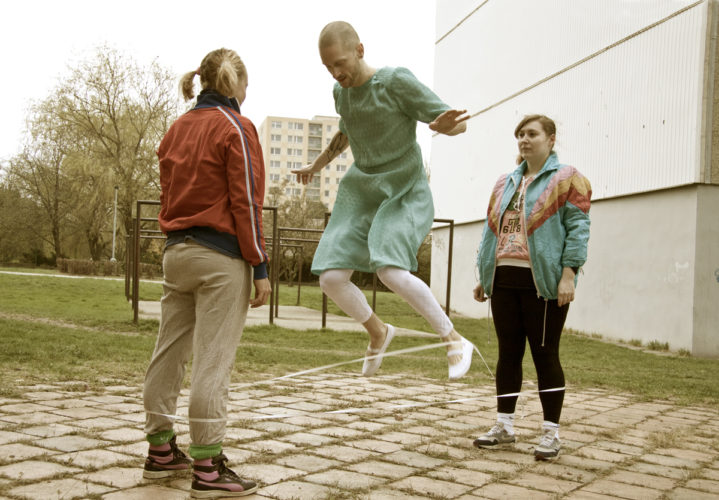

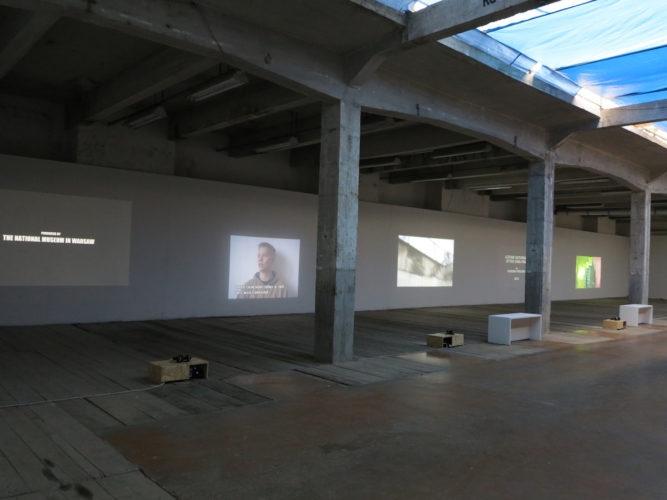
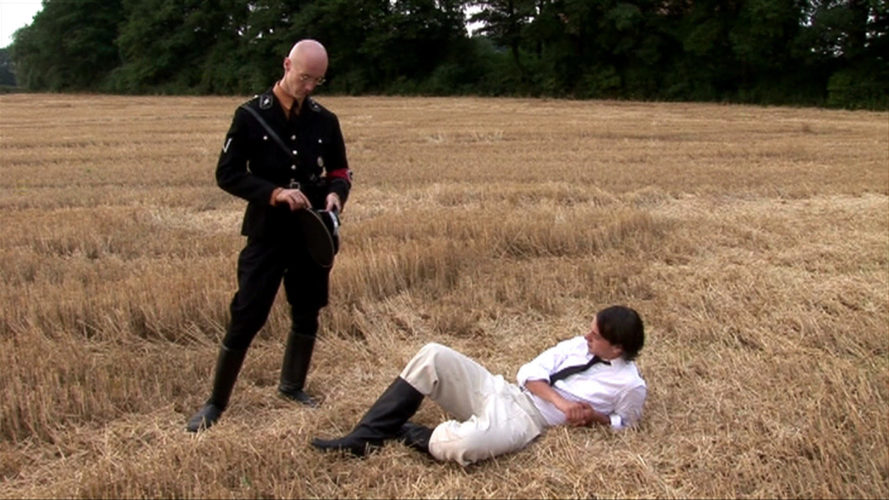
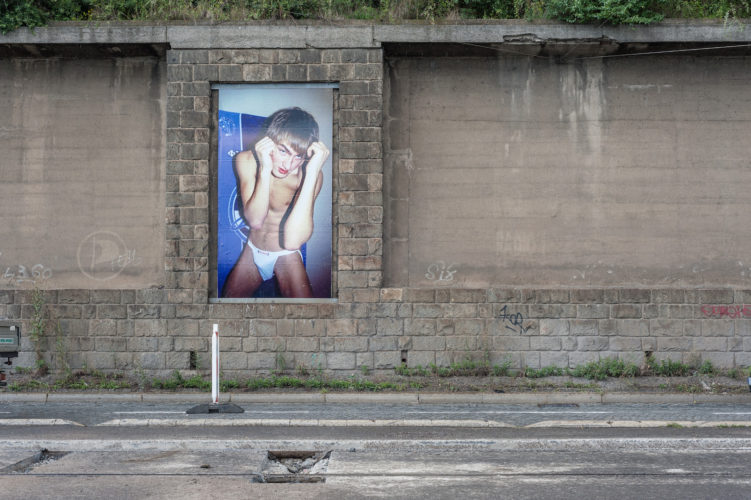
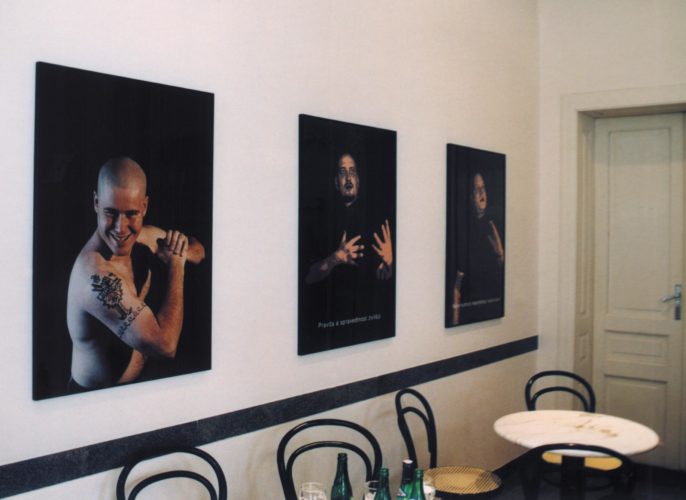
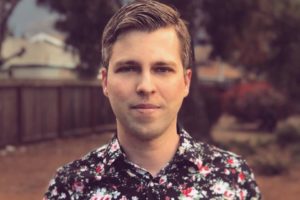
Comments are closed here.